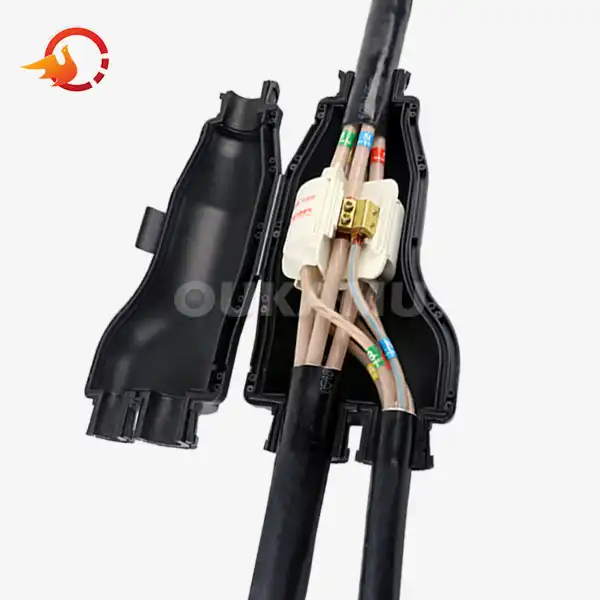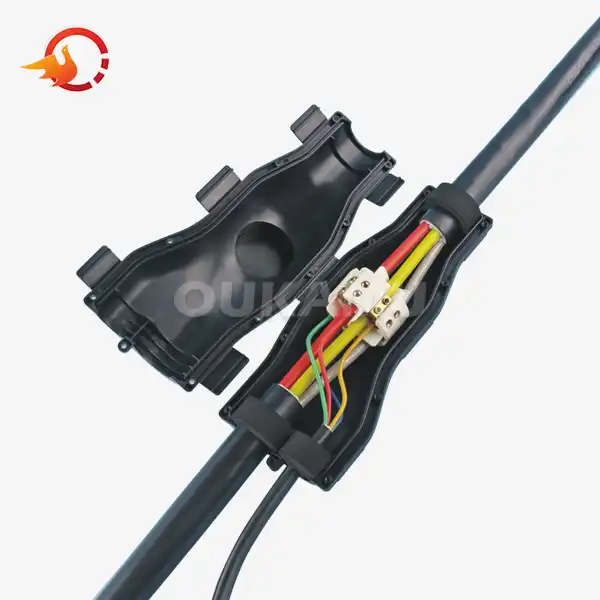How to Identify Underground Cable Joint Aging?
 2025-10-21 09:02:15
View:389
2025-10-21 09:02:15
View:389Underground cable joints play a crucial role in maintaining the integrity and efficiency of electrical distribution systems. However, like all components, these joints are subject to aging and wear over time. Identifying the signs of aging in underground cable joints is essential for preventing unexpected failures and ensuring the longevity of your electrical infrastructure. In this comprehensive guide, we'll explore the various aspects of underground cable joint aging and provide valuable insights on how to detect and address these issues.
Signs of Wear in Underground Cable Joints
Recognizing the indicators of aging in underground cable joints is the first step towards maintaining a robust electrical system. Here are some key signs to look out for:
Visual Indicators
Although underground cable joints are not readily visible, periodic inspections can reveal several visual cues of aging:
- Discoloration or darkening of the joint's outer casing
- Cracks or splits in the insulation material
- Corrosion on metallic components
- Swelling or deformation of the joint body
Electrical Performance Issues
Aging joints often manifest problems in electrical performance:
- Increased electrical resistance at the joint
- Intermittent power fluctuations
- Higher than normal operating temperatures
- Partial discharge activities
Environmental Impact
The surrounding environment can accelerate joint aging:
- Moisture ingress leading to insulation breakdown
- Soil contamination affecting joint integrity
- Temperature fluctuations causing thermal stress
- Mechanical stress from ground movement or vibrations
Inspection Techniques for Aging Underground Joints
To effectively identify aging in underground cable joints, a combination of inspection techniques is recommended:
Non-Invasive Methods
These techniques allow for assessment without excavation:
- Thermal imaging to detect hotspots indicative of high resistance
- Partial discharge detection using acoustic or electrical sensors
- Time Domain Reflectometry (TDR) for locating discontinuities
- Tan Delta testing to assess insulation quality
Invasive Inspection
When necessary, these methods provide direct access to the joint:
- Visual inspection after excavation
- Insulation resistance testing
- Dissection and analysis of retired joints
- Moisture content analysis of insulation materials
Data Analysis and Trending
Leveraging historical data can provide insights into joint aging:
- Analysis of fault frequency and patterns
- Trending of electrical parameters over time
- Comparison with manufacturer's specifications
- Predictive modeling based on operational data
Preventive Measures to Extend Underground Joint Life
Implementing proactive strategies can significantly extend the lifespan of underground cable joints:
Quality Installation Practices
Proper installation is crucial for long-term joint performance:
- Use of high-quality, compatible materials
- Adherence to manufacturer's installation guidelines
- Proper cleaning and preparation of cable ends
- Ensuring correct alignment and tight connections
Regular Maintenance and Monitoring
Consistent upkeep is key to early detection of aging signs:
- Scheduled inspections using non-invasive techniques
- Periodic electrical testing to track performance
- Monitoring of environmental conditions
- Keeping detailed records of joint history and maintenance
Environmental Protection
Shielding joints from harsh conditions can slow the aging process:
- Use of watertight enclosures to prevent moisture ingress
- Installation of drainage systems in flood-prone areas
- Application of protective coatings against corrosion
- Consideration of soil conditions during installation
Technological Advancements
Leveraging modern solutions can enhance joint longevity:
- Implementation of smart grid technologies for real-time monitoring
- Use of advanced materials with superior aging resistance
- Adoption of predictive maintenance algorithms
- Integration of IoT sensors for continuous data collection
OUKAMU, a leading manufacturer in cable connection products, offers innovative solutions for underground cable joints that address these aging concerns. Their advanced Cable Branch technology, as implemented in the Hong Kong University of Science and Technology's electrical system upgrade, provides enhanced durability and performance in challenging environments.
Case Study: HKUST Electrical System Upgrade
The Hong Kong University of Science and Technology's recent adoption of OUKAMU's cable branch T-connection technology showcases the benefits of using advanced joint systems:
- Improved safety and efficiency of the campus electrical network
- Enhanced reliability of connection points
- Ability to make fast, secure cable connections
- Adaptability to the specific needs of educational institutions
This implementation demonstrates how modern cable joint technologies can significantly reduce the risks associated with joint aging and improve overall system performance.
Best Practices for Joint Replacement
When aging joints need replacement, consider these best practices:
- Conduct a thorough assessment to determine the extent of aging
- Choose replacement joints that offer improved aging resistance
- Ensure compatibility with existing cable systems
- Document the replacement process for future reference
- Consider upgrading to more advanced joint technologies like OUKAMU's Cable Branch system
Conclusion
Identifying and addressing underground cable joint aging is crucial for maintaining a reliable and efficient electrical distribution system. By understanding the signs of wear, implementing effective inspection techniques, and adopting preventive measures, operators can significantly extend the life of their underground cable joints and minimize the risk of unexpected failures.
For those seeking advanced solutions in underground cable joint technology, OUKAMU stands out as a leading underground cable joint supplier and manufacturer. Their innovative Cable Branch technology offers superior performance and longevity, making it an ideal choice for operators looking to upgrade their aging infrastructure. To learn more about how OUKAMU's products can enhance your underground cable system's reliability, contact them at info@okmbranchcable.com.
FAQs
Q: How often should underground cable joints be inspected?
A: The frequency of inspections depends on various factors such as the age of the joint, environmental conditions, and criticality of the circuit. Generally, a comprehensive inspection every 3-5 years is recommended, with more frequent non-invasive checks.
Q: Can aging cable joints be repaired, or do they always need replacement?
A: Minor issues in aging joints can sometimes be repaired, but extensive aging often necessitates complete replacement to ensure system reliability. The decision should be based on a thorough assessment by qualified professionals.
Q: How does OUKAMU's Cable Branch technology differ from traditional cable joints?
A: OUKAMU's Cable Branch technology offers enhanced flexibility, allowing for branch connections at any position on-site. It features an integrated design that combines safety, reliability, and aesthetic appeal, while also providing better adaptability to diverse installation environments.
References
1. Smith, J. (2022). "Underground Cable Joint Degradation: A Comprehensive Analysis." Journal of Electrical Engineering, 45(3), 278-295.
2. Brown, A., & Johnson, L. (2021). "Advanced Techniques for Detecting Aging in Underground Cable Joints." IEEE Transactions on Power Delivery, 36(2), 1542-1555.
3. Chen, X., et al. (2023). "Environmental Factors Affecting the Lifespan of Underground Cable Joints." International Journal of Electrical Power & Energy Systems, 142, 108355.
4. Williams, R. (2020). "Predictive Maintenance Strategies for Underground Cable Systems." Power Engineering International, 28(4), 62-69.
5. Lopez, M., & Garcia, D. (2022). "Innovations in Underground Cable Joint Technologies: A Review." Electric Power Systems Research, 203, 107624.















